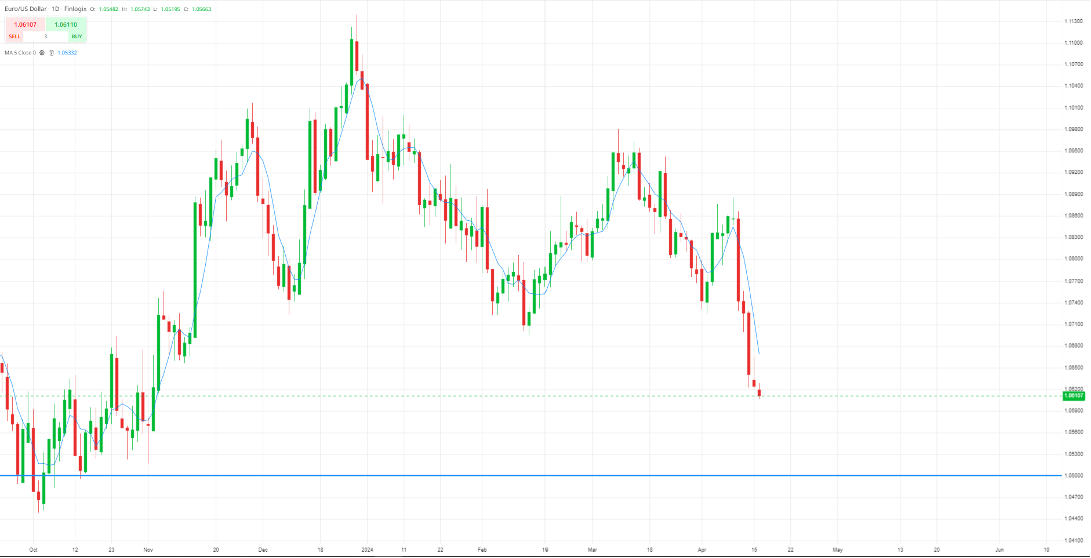Last night (Australian time) at 10:30 pm, a highly anticipated economic indicator was released from the United States: Retail Sales and Core Retail Sales MoM.
Market expectations hovered around 0.3%, following the previous month’s 0.9% reading. However, the actual figures diverged significantly from forecasts, with a robust 0.7% increase. This unexpected outcome further bolstered the USD, propelling it from 105.900 to its current position at 106.297. It underscores the enduring strength of the American economy, despite other critical data pointing to elevated and seemingly uncontrollable inflation.
In reaction to this news, the EURUSD experienced a slight fluctuation, but as the Asian session unfolds, we witness heightened volatility in the currency pair, as anticipated. As mentioned in my analysis yesterday, we can expect the EURUSD to approach levels around 1.05 in the coming weeks or months, contingent upon market volatility.
EURUSD Daily Chart

Looking ahead to tomorrow (Wednesday, April 17, 2024), we anticipate market data from the European region concerning the country’s inflation over a specified period. This data, encompassing YoY and MoM metrics, holds significance for the EUR’s strength. A rise in inflation would likely bolster the EUR and potentially trigger a retracement in price. Conversely, market participants anticipate a slight dip in inflation. Personally, I lean towards a downward bias in the risk assessment.
US Retail Sales

March’s hot US CPI print has led to Fed rate cut expectations being dialled back considerably in anticipation that strong US economic performance will now keep inflation higher for longer. The net upshot of this has been a further weakening of the yen against the greenback, with USD/JPY climbing beyond its recent peak to around 153. The Ministry of Finance (MoF) has been quick to voice its concern, with Vice Finance Minister for International Affairs Masato Kanda yesterday characterizing recent exchange rate movements as “rapid” and declaring that “We’d like to respond appropriately to excessive moves, without ruling out any options” (Reuters).
A July hike is possible should inflation data surprise. That said, with Japan’s economy already running at full employment, increases in aggregate demand and/or yen depreciation now have obvious potential to generate additional upward pressure on prices. Persistent US inflation has owed much to the strength of US aggregate demand, which, clearly, is also relevant to the outlook for the Japanese economy. Moreover, the BoJ’s views on domestic inflation should be affected if the prospect of Fed rate cuts continues to recede and the yen is expected to remain weak as a result. We thus see potential for the next rate hike to be brought forward if such inflationary changes in external conditions are accompanied by strong domestic CPI data in the next few months. In particular, the BoJ will be looking for evidence that this spring’s sizable wage hikes are pushing up services prices. A July rate hike might start to look more likely if the Tokyo CPI print for April (due on the second day of the BoJ’s meeting on 25-26 April) comes in higher than +0.2% m/m.
The subject matter and the content of this article are solely the views of the author. FinanceFeeds does not bear any legal responsibility for the content of this article and they do not reflect the viewpoint of FinanceFeeds or its editorial staff.












